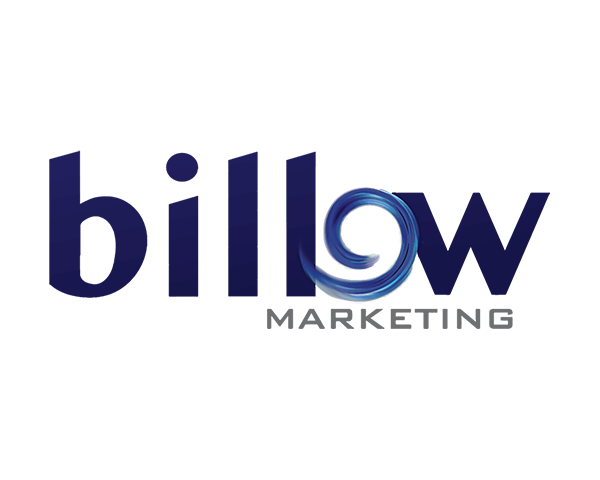 Advertising is the act of getting the word out to consumers about a product or service.
Advertising is the act of getting the word out to consumers about a product or service.
Marketing is the larger process of successfully selling products or services to the consumer from start to finish.
Marketing may begin as early as the research and development stage and involves market research, product development, pricing, sales strategies, distribution, advertising and public relations. Advertising, therefore, is only one part of the marketing process.
Billow Marketing manages all aspects of the image your company is striving to portrait. We use our expertise to consult you in marketing to your customer, your employees, your investors, anyone that you need to have an interest in your business. Whether you’re just starting out or have been in business for years, these proven marketing strategies will help your business find new customers without spending a fortune.
1. Plan your attack.
Define who your best prospects are, and then determine the best way to reach them. Be as specific as possible. Is the decision maker the CTO of the company, the director of human resources, or a 37-year-old working mom? Will you find them on Twitter, Google Plus, Pinterest or Facebook? What about in-person networking at local business meetings? Will they be searching for your type of product on Google or Bing? Do you want to start promoting your business to them at the start of their buying cycle, or when they’re about ready to pull out their credit card and make the purchase. Write your answers down, and refer to them before you start any new marketing tactic.
2. If you don’t have a website, get one set up.
If you can’t afford to have someone custom-design your website, put your site up using one of the companies like SiteSell.com or HomeStead.com that provide templates and tools that make it easy to create a basic website. Check out our portfolio of websites. You may just want to hire Billow Marketing to build your new website!
3. Set up a free listing for your business in search engine local directories.
You can do this at http://www.google.com/+/learnmore/local/, https://www.bingplaces.com/, and http://smallbusiness.yahoo.com/local-listings/. Be sure to include your website link and business description. If you don’t have the time to do this, let us know and we can knock it out for you in a flash!
4. Set your business profile or page up on LinkedIn, Facebook, Google Plus and Twitter.
Be sure your business profile includes a good description, keywords and a link to your website. Look for groups or conversations that talk about your type of products or services and participate in the conversations, but don’t spam them with constant promos for what you sell. If this is not your bag, we have a number of clients we help create content for and schedule posts on their various social media platforms on their behalf. We can help you too!
5. If you’re just starting out and don’t have a business card and business stationery, have them made up — immediately.
Your business card, letterhead and envelope tell prospective customers you are a professional who takes your business seriously. Be sure to list your website address on your business card and, letterhead and any handouts you create. Looking for a graphic designer? Contact us if you need help creating your print marketing materials!
6. Get your business cards into the hand of anyone who can help you in your search for new clients.
Call your friends and relatives and tell them you have started a business. Visit them and leave a small stack of business cards to hand out to their friends.
7. Talk to all the vendors from whom you buy products or services.
Give them your business card, and ask if they can use your products or service, or if they know anyone who can. If they have bulletin boards where business cards are displayed (printers often do, and so do some supermarkets, hairdressers, etc.), ask if yours can be added to the board.
8. Attend meetings of professional groups, and groups such as the Chamber of Commerce, Rotary Club, BNI or civic associations.
Have business cards in a pocket where they are easily reachable. Don’t forget to ask what the people you speak with do, and to really listen to them. They’ll be flattered by your interest, and better remember you because of it.
9. Pay for membership in those groups that attract your target customers.
If the group has a website and publishes a list members on the site, make sure your name and website link get added. Once it is added, double check to be sure your contact information is correct and your website link isn’t broken.
 10. Become actively involved in 2 or 3 of these groups.
10. Become actively involved in 2 or 3 of these groups.
That will give you more opportunity to meet possible prospects. But remember: opportunists are quickly spotted for what they are, and get little business. While you won’t want to become involved in many organizations that require a lot of your time in, you can –and should– make real contributions to all of them by offering useful ideas and helping with projects when possible. Billow Marketing is a proud member of the Grayson Founders BNI group in Sherman, TX. We’d love to have you as a visitor sometime!
 11. Look for something unusual about what you do, and publicize it.
11. Look for something unusual about what you do, and publicize it.
Send out press releases to local newspapers, radio stations, cable TV stations, magazines whose audiences are likely to be interested in buying what you sell. Be sure to post the press releases on one or more online press release services, too, being sure to include links to your website. To increase your chance of having the material published, send along a photo with your press release. Did you know copywriting is another service we offer!?
12. Write an article that demonstrates your expertise in your field.
Send it to noncompeting newspapers, magazines, and websites in your field that accept submissions from experts. Be sure your name, business name, phone number, and a reference to your product or service is included at the end of the article. If the editor can use the article you get your name in print, and possibly get your contact information printed for free, too.
13. Publicize your publicity.
Whenever you do get publicity, get permission from the publisher to reprint the article containing the publicity. Make photocopies and mail the copies out with sales letters or any other literature you use to market your product or service. The publicity clips lend credibility to the claims you make for your products or services.
14. Ask for work or leads.
Contact nonprofit organizations, schools and colleges, and even other businesses that have customers who may need your services.
15. Network with others who are doing the same type of work you are.
Let them know you are available to handle their work overloads.
 16. Offer to be a speaker.
16. Offer to be a speaker.
Industry conferences, volunteer organizations, libraries, and local business groups often need speakers for meetings. You’ll benefit from the name recognition, contacts and publicity.
17. If your product or service is appropriate, give demonstrations of it to whatever groups or individuals might be interested.
Or, teach others how to use some tool you use in your work. When you’re pulling your hair out because Facebook changed the way you can post to your business page, give us a call. We can train your staff on the latest ways to use all the various social media platforms.
18. Put videos of your product or service on YouTube and other video-sharing and slide-sharing sites. Here’s an example of a storm shelter installation video on YouTube for our client Texas Storm Shelter Guy.
19. Find out what federal, state, and local government programs are in existence to help you get started in business.
Most offer free counseling, and some can put you in touch with government agencies and large corporations that buy from small and woman-owned businesses
20. If you are a woman-owned or minority-owned business look into getting certified by private, state or federal organizations.
Many purchasing agents have quotas or guide for the amount of goods and services they need to buy from minority- and woman-owned businesses.
21. Send out sales letters to everyone you think might be able to use what you sell.
Be sure to describe your business in terms of how it can help the prospect. Learn to drop a business card in every letter you send out. Follow up periodically with postcard mailings.
22. If you use a car or truck in your business have your business name and contact information professionally painted on the side of the vehicle.
That way your means of transportation becomes a vehicle for advertising your business. If you don’t want the business name painted on the vehicle, consider using magnetic signs.
23. Get on the telephone and make “cold calls.”
These are calls to people who you would like to do business with. Briefly describe what you do and ask for an appointment to talk to them about ways you can help them meet a need or solve a problem.
24. Get samples of your product or your work into as many hands as possible.
25. Offer a free, no obligation consultation to people you think could use your services.
During such consultations offer some practical suggestions or ideas–and before you leave ask for an “order” to implement the ideas.
26. Learn to ask for referrals.
Ask existing customers, prospects and casual acquaintances. When you get them, follow up on the leads.
27. Use other people to sell your product or service.
Instead of (or in addition to) selling your products yourself, look for affiliates, resellers or people who will generate leads for you in return for a commission on sales. Be sure your pricing structure allows for the fees or commissions you will have to pay on any sales that are made.
28. Get together with businesses who serve the same market, but sell different products and services.
Make arrangements to pass leads back and forth, or share mailings.
29. Have sales letters, flyers and other pertinent information printed and ready to go.
Ask prospects who seem reluctant to buy from you: “Would you like me to send information?” Follow up promptly with a note and a letter that says, “Here is the information you asked me to send
30. Run a contest.
Make the prize something desirable and related to your business — it could be a free gift basket of your products, for instance, or free services.
31. Test buying Pay Per Click (PPC) advertising on the search engines.
If you are not yet advertising on search engines search for offers that give you $50 or $75 in free advertising to start. Read the directions for the service you plan to use, and very carefully watch what you spend on a daily or more frequent basis until you are comfortable using PPC ads and see you are getting a return on your investment. PPC can be a good idea for some businesses and not a good idea for others. Let us help you determine if your business would thrive in the PPC world or get swallowed up by the big spenders in your industry. If PPC advertising is a good idea for you, we’ll manage all the set up and maintenance that can get pretty overwhelming when trying to do it on your own.
We hope these strategies for marketing will get you moving in the right direction. If it all seems overwhelming, get some help! Billow Marketing is here to help you make waves so you can get noticed!






